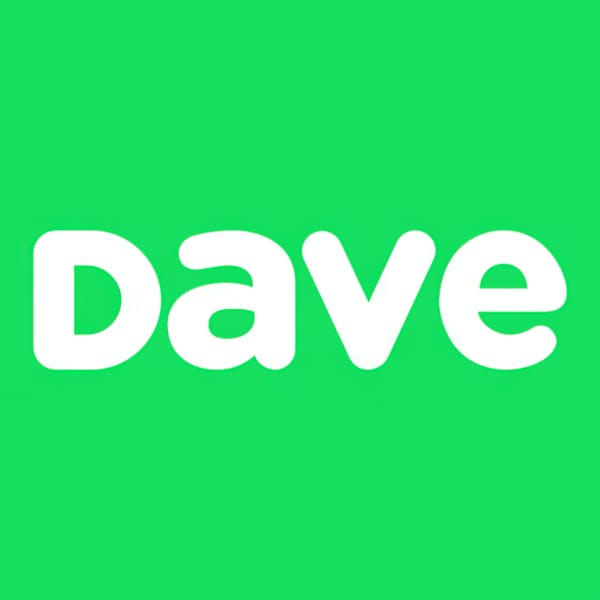Deb Bardhan, Chief Business Officer at Highnote, on incentive structures in card issuing
 Conor Gleeson
Conor Gleeson

Background
Deb Bardhan is the Chief Business Officer at Highnote. We asked Deb about the economics of card issuing, the crowded competitive landscape, and the customer dynamics of the industry.
Questions
- Could you start off talking a little bit about Highnote and the problem you’ve set out to solve?
- Can you talk about Highnote's customer profile and the core use cases that drive adoption?
- How does the Highnote product deliver better optionality for developers around how to build fintech or their embedded finance product? Why is that optionality important?
- With Highnote, a customer brings and manages their own sponsor bank relationship, with BaaS, that relationship is often intermediated by the provider. Can you talk about the relative merits of each approach?
- Marqeta takes a relatively low percentage of interchange, zero to 30%, sharing the majority with the fintechs they work with. How do you think about the economics of the interchange at Highnote, and how do they change as the volume scales? How might they change over time?
- Marqeta allows customers to internalize a greater share of interchange, but they have high upfront costs around $25-$35,000. As a company's card volume grows, however, those upfront costs become less impactful. What are the main offerings that would make it worthwhile for bigger customers to stick around, say functionality, product, service, economics, etc?
- With a big issuer like Marqeta, I2C, etc., the product roadmap might be planned out years in advance. At Highnote, how do you think about being flexible while not yielding too much control to your customers over your roadmap?
- Is there any difference between how you think about selling to fintechs versus selling to embedded finance companies? If a difference exists between those, does one provide a longer or better growth runway?
- What are some key factors around when it makes sense for a company to sign up with a card issuer like Highnote versus a BaaS platform?
- Cash App represents a massive percentage of Marqeta's revenue; I think something like 80%. How do you think about customer concentration risk in card issuing? Is it a concern?
- Part of how Marqeta mitigates concentration risk fear is by signing long multi-year enterprise contracts. How do you think about balancing a self-serve go to market that's aimed at bringing the individual developers or teams with creating predictable cash flow through bigger, higher ACV deals with larger enterprise customers?
- There are incumbent players like FIS and Fiserv in this market, and then there are some other card issuing point solutions out there, from Marqeta to newer competitors like Lithic and Apto Payments. How do you think about Highnote's positioning here?
- When it comes to luring enterprise customers, companies like Fiserv and Marqeta have proved that they can operate at scale, while startups lack the type of track record over time. What do you think prospects should look for from card-issuing providers to understand whether they can scale as partners?
- What’s difficult about building a company in this space product-wise? What makes your team or any team particularly positioned to succeed with incumbents and just market dynamics in general?
- Looking towards the future addressable market expansion, could you categorize Highnote's customer base as being both fintechs, neobanks, and other core finance companies and embedded finance companies? Where do you see the biggest growth runway?
- If one of your good friends were to join Highnote in the next month, what advice would you give them to succeed at the company?
Interview
Could you start off talking a little bit about Highnote and the problem you’ve set out to solve?
Highnote is about 18 months old. The company was started in the middle of COVID in October of 2020. We’ve grown very fast within this short timespan. We have raised more than $90M in funding at this point in Seed and Series A. The team is now close to 80 people from leading fintech, tech and financial services companies.
The vision of Highnote is to be a unified platform for both issuance and acquiring. Issuing and acquiring are two nodes of the card payment ecosystem that exist in isolation today. You have a lot of companies that do the acquiring part of it, companies like Stripe and so on, and you have issuers on the other end as companies that purely focus on issuance like Marqeta and Galileo.
No one has built a platform which unifies both issuance and acquiring on a single platform. Highnote will be the industry's first platform built for that purpose in that fashion.
That unlocks a lot of benefits in the payments ecosystem around real-time settlement, reduction in fraud and risk, and unlocking a lot of economies of scale for merchants and issuers in the ecosystem, as well as economic benefits to customers who want a single solution for all of their payments needs. What we have already built and gone live with is a full-stack card issuance platform with a bare-metal connection to both Visa and MasterCard. We’ve built the technology infrastructure from the ground up, connected directly to Visa and Mastercard for processing. Our Mastercard connection is already live. The Visa connection is in final certification.
Can you talk about Highnote's customer profile and the core use cases that drive adoption?
We’re focused on digital enterprises that want to embed card issuance as a core capability to one of their existing products to drive more user engagement, to create more loyalty in their customer base, extend their brand, and to generate a new line of business for them.
How does the Highnote product deliver better optionality for developers around how to build fintech or their embedded finance product? Why is that optionality important?
I'd like for us to take a slight step back on this question in order to really understand the decision-making process around when an enterprise decides to do card issuance or look into card issuance.
Generally, the stakeholders involved are the technology teams, the developers - but also the business owners and the product managers. When you look at it from that perspective, Highnote brings a couple of very differentiated capabilities to the table. To really be a successful card payments platform, there are three things that you have to do very well. In the market today, as you're probably aware, current industry players do some of these but not all of them. We’re the first platform in the market that is doing all three core capabilities, soup to nuts from the ground up, built organically.
What are those three capabilities?
The first is around the issuer processor technology itself. The last time an issuer processor technology was built from the ground up at scale was probably around 10 years back when Marqeta came into existence. Since then, no one has attempted to build an issuer processor from scratch. A lot of the issuance companies that tout card issuance in the market today are really taking a custom version of an I2C or a Galileo or some kind of a processor at the back end—and then adding some customization and slapping a bunch of APIs in front of it to do issuer processing, which is very different. At Highnote, we've built issuer processing entirely from scratch and bare-metal connected to both the card networks.
The second core capability around card issuance that you need to do really well is program management.
Various players in the industry either don't offer program management, and you have to DIY the end-to-end program management. Or they offer program management in a very rigid construct. And it's super expensive if they're doing program management for you. What Highnote has built is a soup to nuts program management capability, which is built in a modular fashion. We fundamentally believe that as customers scale their card programs, they have a better lens on understanding their end users and customers that are using their cards than any horizontal platform can. With that view in mind, we've built program management in a way that allows companies to scale in a very differentiated manner as they gain adoption on their card programs.
The third core capability is around the general ledger. For any successful fintech or financial services platform, a general ledger is the thing that holds everything together.
In the card issuance industry today, most players don't provide a general ledger, and so customers have to end up building their own general ledger from scratch, which is, by the way, very expensive technology to build, and it requires a significant amount of engineering resources and capital investments. You also have to maintain that general ledger at scale as you grow the program.
There are other players in the industry that provide a very basic general ledger that focuses just on card-settled transactions, and they don't capture any other financial transactions outside of the pure authorized and settled transactions. Reconciliation against these ledgers can be a nightmare given the limited amount of data captured.
Highnote has built a general ledger capability, again, from scratch, based on double-entry accounting principles on a very scalable infrastructure, which greatly reduces engineering and financial operational costs for customers as they scale their programs.
With Highnote, a customer brings and manages their own sponsor bank relationship, with BaaS, that relationship is often intermediated by the provider. Can you talk about the relative merits of each approach?
Highnote does provide, as part of our program management, the sponsor bank relationship in the mix, so customers don't have to necessarily bring their own sponsor bank. Highnote is building with a hybrid approach where we bring the sponsor bank as part of the program management package. But over time, we also want our customers to have a meaningful relationship with the sponsor bank and have the flexibility of adding additional sponsor banks as needed.
That's very different in the market because, as you know, either there are providers that will tie you into a sponsor bank.
Then there are others where you have to do the groundwork, and you have to get through building a relationship with a sponsor bank and actually complying with all of the requirements that sponsor banks have on fintech programs. That requires a tremendous amount of resources - both human and capital.
Both those models have pitfalls. Therefore, we’ve taken a hybrid approach, which solves the issues that customers face with these models.
Marqeta takes a relatively low percentage of interchange, zero to 30%, sharing the majority with the fintechs they work with. How do you think about the economics of the interchange at Highnote, and how do they change as the volume scales? How might they change over time?
As you probably are aware, Marqeta has two different models. They have a processor-only model where all Marqeta is providing is the processor technology.
They also have the Managed by Marqeta model, where they do the actual soup to nuts program management, where the interchange split tends to be much lower for the customer and much higher for Marqeta.
Highnote is bringing a very differentiated approach to the market because what we saw in the industry is one of two models.
With many of the providers, what you'll see is you get a hundred line items, everything from transaction fees to monthly account fees and fixed costs and API calls.
On the other end, you have the newer models, which take a split of the revenue share and they also ask you to pay a SaaS fee, and then they ask you to pay ridiculous amounts of implementation fees and so on.
We are taking a very different approach. We feel that customers launch card issuance to drive their business forward. We want to create a model which aligns our incentives fully with the customer's incentive.
We've created a very simple model, which is purely based on revenue sharing on the interchange piece. Again, it is very customized depending on the customer's actual card program. We spend a significant amount of time just understanding the customer's needs and customizing the revenue share agreement in a way that gets them aligned with the incentive of making their program successful. Then as they scale, they get more than a majority share of the revenue equation.
Marqeta allows customers to internalize a greater share of interchange, but they have high upfront costs around $25-$35,000. As a company's card volume grows, however, those upfront costs become less impactful. What are the main offerings that would make it worthwhile for bigger customers to stick around, say functionality, product, service, economics, etc?
What we've seen from our experiences in the industry is, as customers start scaling, they start seeing the program management and the issuer processing providers as middleware that needs to be optimized, that needs to be either removed or optimized. That happens because the incentives are not aligned correctly with the customer's growth strategy, which is why the commercial model that we've built is fully aligned with how customers need to operate at scale.
Customers will launch with some providers because they get quick time-to-market and low entry cost. But as they scale, the amount that they leave on the table actually significantly impacts their P&L. They have this incentive to go and strike a deal directly with banks and try to in-source a lot of the technology capabilities that they're using with these platforms.
We’ve done away with that kind of incentive structure. As customers scale, the amount of revenue that they can keep for themselves means it doesn't make any sense for them to try to in-source a lot of these technologies that they would otherwise have to build. That's one incentive for customers to scale on Highnote.
The other piece is around product innovation and differentiation. We’ve built the most modern technology infrastructure as well as process and operations infrastructure in the market today. What that allows customers to do is continuously keep innovating on their capabilities over time instead of having to switch to a different provider, for example, if a customer wants to launch with a debit program today, and then over time, they want to add a charge card program, and then, on top of that, they want to add an unsecured credit program. Normally, they would have to potentially partner with three different solutions over time to light up their complete program. With Highnote, that's not the case. We’re able to provide all of these different solutions over time as they start thinking about their roadmap for the future.
With a big issuer like Marqeta, I2C, etc., the product roadmap might be planned out years in advance. At Highnote, how do you think about being flexible while not yielding too much control to your customers over your roadmap?
One of the core values that we have as an organization is customer obsession. That trickles down through the entire stack all the way from the way we think about the business to the way we think about building our engineering organizations, the way we think about building our product roadmap, and so on. A lot of our product roadmap is based or highly attuned to listening and understanding what customers need versus building something in isolation that we think the customers may need. There’s a lot of collaboration we do with our customers, and, philosophically, we try to reserve 20% of our roadmap purely for customer inputs, so that, as they're thinking about the future, we’re there alongside them, building for them.
Is there any difference between how you think about selling to fintechs versus selling to embedded finance companies? If a difference exists between those, does one provide a longer or better growth runway?
I think embedded finance at this moment means different things to different people.
We see embedded finance as the ability to integrate financial services at the point of product delivery for customers. A great example is the Uber driver debit card. That's an example of an embedded finance product because they're embedding financial services at the point of delivery for the drivers so that they can get faster pay and so on.
We don't necessarily see fintechs and embedded finance customers as different segments. We feel like it really depends on the use cases and needs of the customer.
Going back to the Uber driver debit program—what it essentially provides is real instantaneous cash out of their earnings and an account for holding their earnings. That same use case can be applied to a fintech, for example, that's providing early wage access. What they're doing is allowing you to cash out the earnings that you've earned to date, and then also providing an account for you to do savings and so on. The use cases are very similar. The only thing that differs is the logo behind them. What we think about when we talk to customers is their actual core needs and the capabilities that they want to bring to the market. We work together with them to design the best architecture all the way from the flow of funds to the actual user experience and workflows that they want to enable for their end users and customers.
What are some key factors around when it makes sense for a company to sign up with a card issuer like Highnote versus a BaaS platform?
I think of banking as a service as a pizza kit. If you were to make pizza for dinner, they provide you with a kit that has all of the different ingredients you need. They're not necessarily building all these ingredients themselves, right? They're outsourcing these ingredients from third-party vendors. For instance, most BaaS providers haven’t built an end-to-end processing platform. They may not also provide a general ledger. Two key components that are needed for the successful scaling of any embedded finance product. In most cases they’re leveraging existing processing and ledgering solutions and then building a custom API framework on top of it. They’re not really building deep tech in the manner in which a best-in-breed payments platform like Highnote is doing.
We feel like, yes, there's a market for people who want to experiment and test the product hypothesis that they want to get out in the market. That's a pretty decent framework to go with. However, if you're really thinking about scaling card issuance as a core capability, to drive greater user engagement, greater loyalty, and establish a new line of revenue and business for your company, then what you need is a pure play card issuance platform like Highnote to work with you. We've built the entire platform from ground-up for purpose, versus packaging third-party processors and ledgers and putting an API in front of it. That not only gives you greater technology, scale and innovation, and flexibility, but also helps you on the economic side.
Another thing to point out is that the use cases where BaaS players might make sense are when you’re mostly trying to grow assets through deposit accounts and enable digital banking functionalities such as bill-pay-like services but not really focused as much on card issuance and payments as a primary capability.
And finally, as you can imagine, since BaaS players haven’t built core processing and ledgering capabilities, it introduces layers of middlemen which reduces the revenue share significantly that a customer can garner from their own card program. It also makes operations a game of telephone when it comes to troubleshooting customer issues or doing reconciliations. This can create significant scaling challenges. Whereas if you're building everything for purpose, vertically integrated, from the ground up, you can provide a higher quality customer experience at a much better commercial value.
Cash App represents a massive percentage of Marqeta's revenue; I think something like 80%. How do you think about customer concentration risk in card issuing? Is it a concern?
Yes and no. I think Marqeta probably has been a victim of some of its own success in the partnership with Cash App. That's a phenomenal program, and we love what Square is doing with the Cash App program. We feel like there are going to be certain breakout organizations that have millions and millions of customers that drive a significant portion of payments volume.
The way we think about it at Highnote is we are very, very thoughtful from day one, trying not to get into a situation where a single customer is driving all of your roadmap and all of your commercial value. We have many different programs in many different verticals that partner with us. We’re being thoughtful about our business model in a way where the revenue concentration risk that's happening currently with Marqeta is less likely to happen in the future for us.
Part of how Marqeta mitigates concentration risk fear is by signing long multi-year enterprise contracts. How do you think about balancing a self-serve go to market that's aimed at bringing the individual developers or teams with creating predictable cash flow through bigger, higher ACV deals with larger enterprise customers?
That goes to a little bit about the state of affairs in the market today. With Marqeta's success, they've definitely illuminated the opportunity on the card issuance side, and they have done a phenomenal job at leading the industry on that front. But because they were not built for the purpose of card issuance in the way that we are, they haven't really been able to serve the entire spectrum of the market in the way that we are thinking about it. What they've tended to do over time is focus on the very large enterprise and neglect the remaining small to mid-size enterprises and the semi-medium to large enterprises who want to move fast and differentiate. We’ve built an infrastructure in a way which can cover a wider spectrum of the market.
We’re doing this in a few ways.
One, again, goes back to the word I keep throwing around—built for purpose. We've built this for purpose, keeping in mind all of the issues that we saw the incumbents facing around scaling. We've tried to solve those internally, both from a technology perspective as well as from an operations and scaling perspective from day one. We feel the infrastructure we’ve built is highly scalable and can achieve the level of accuracy and servicing needed for this wide spectrum - now and in the future.
The second piece is around the developer experience. We’ve built an API-first company. Building that API-first company in conjunction with a company that's super obsessed about customers really brings this unique recipe into the market, which we feel is very differentiated and allows us to scale horizontally across the spectrum very fast.
There are incumbent players like FIS and Fiserv in this market, and then there are some other card issuing point solutions out there, from Marqeta to newer competitors like Lithic and Apto Payments. How do you think about Highnote's positioning here?
Going back to one of the things I said earlier, to do card issuance well, you have to have three capabilities working in tandem and at scale.
The challenges are that a lot of the incumbents do provide the issuer processing piece, but they don't, for example, provide a general ledger, and they don't provide full suite program management.
Then there are others in the market, some of the newer names that you mentioned, that actually haven't built issuer processor technology. They’re built as an API layer on top of legacy issuer processor technology and they don't provide a robust general ledger. They just provide the program management piece, which again is in a very rigid fashion. If you don't fit that particular construct they’ve created in that program management framework, you are pretty much left on your own to fend for yourself.
When it comes to luring enterprise customers, companies like Fiserv and Marqeta have proved that they can operate at scale, while startups lack the type of track record over time. What do you think prospects should look for from card-issuing providers to understand whether they can scale as partners?
We encourage our customer partners to really look at the core infrastructure on how this is built.
One of the unique things from an infrastructure and reliability perspective that we have brought to market is a fully live-live architecture. That's not been done yet on the payment processing side, by even the incumbents or the newer players, because most legacy infrastructure that exists on the market is based on on-premise, or custom data center implementations.
Or, if they're based in the cloud, they're based on a live-failover tech model.
What we've built is a live-live model, which means that we have multiple nodes running the same. It's almost like a blockchain-type approach where you have multiple decentralized nodes, which have exactly the same information. Even if one node goes down, your processing is completely unimpacted.
That’s fundamentally because we've built this technology from the ground up thinking about these actual issues that you raised. We've been able to architect it in a way that provides much higher reliability than any of the platforms that today operate at scale because of the time in the market that they already have in front of us.
What’s difficult about building a company in this space product-wise? What makes your team or any team particularly positioned to succeed with incumbents and just market dynamics in general?
We have brought together the world's best experts in and around payments. This expertise comes not just from building core payments infrastructure but also from the customer side. A lot of our team members have been users of these services over the last few decades. They acutely understand, from a customer perspective, the challenges that they had faced in scaling.
We have people in the team who have built these infrastructures as infrastructure providers at scale. They have the full gamut of experience and knowledge to really understand where things have failed in the past, where things haven't scaled really well, where things could have been done differently. All of that collective experience has come together at Highnote to build the world's most modern payments infrastructure in the market today.
We feel like that's a very differentiated approach already. Going back to your question of what's difficult about building it—it’s a pretty Herculean task to build the infrastructure that we've built in the last 18 months. Generally, a lot of the incumbents in the space have taken decades to get to the level of scalability, reliability, and innovation that we have within the last 18 months. That’s because of the collective experience the team brings here because we've got the battle scars and we know exactly what not to do and what to build.
Looking towards the future addressable market expansion, could you categorize Highnote's customer base as being both fintechs, neobanks, and other core finance companies and embedded finance companies? Where do you see the biggest growth runway?
We are just getting started. As I mentioned, our go-to market is focused on digital enterprises that want to embed card payments into their core digital product roadmap. That definition sort of covers all of the examples of customer segments that you gave, which are fintech, digital brands, embedded finance platforms, and so on. Definitionally, that's what our go-to market is today. In terms of what we are building ahead, we’re building this unified platform for both issuance and acquiring.
There are super successful companies in the space today that have built $100 billion in market value on just the acquiring side or just on the issuance side. We’re building both of these capabilities from day one on a unified platform. We feel like that unlocks a super massive market in front of us.
The second piece that we haven't scratched the surface on is unsecured revolving credit.
Today, unsecured revolving credit is primarily dominated by issuance from the large banks, the top three or four banks in the US today, and then some standalone financial services companies like Synchrony Financial. We strongly believe in the way we are building the infrastructure. For example, on the credit issuance side, we’re building everything, including servicing loan management and so on, soup to nuts, and we’re building it from a scalability perspective from day one. Over time, we can compress the costs on the credit side by a magnitude, unlocking a multi-trillion dollar market in front of us.
Those two taken together, as you can imagine, is a big ambitious market strategy.
If one of your good friends were to join Highnote in the next month, what advice would you give them to succeed at the company?
Our offer for anyone joining Highnote is, “Come here to do your life's best work, and we’ll unlock all of the hurdles that have been stopping you from doing your life's best work to date.”
That could be anything from not having enough autonomy or not having enough scope of work to not being able to build something from scratch that you can feel passionate about.
Marrying all of those three secret ingredients is intentional inclusion. We take that very seriously because a lot of companies talk about inclusion and diversity, but foundationally, they haven't built the organization to be inclusive.
We’re building this foundation very strongly from the ground up so that as we scale, this doesn't become an afterthought, but rather weaved into our DNA and our team member's DNA from day one.
Disclaimers
This transcript is for information purposes only and does not constitute advice of any type or trade recommendation and should not form the basis of any investment decision. Sacra accepts no liability for the transcript or for any errors, omissions or inaccuracies in respect of it. The views of the experts expressed in the transcript are those of the experts and they are not endorsed by, nor do they represent the opinion of Sacra. Sacra reserves all copyright, intellectual property rights in the transcript. Any modification, copying, displaying, distributing, transmitting, publishing, licensing, creating derivative works from, or selling any transcript is strictly prohibited.











